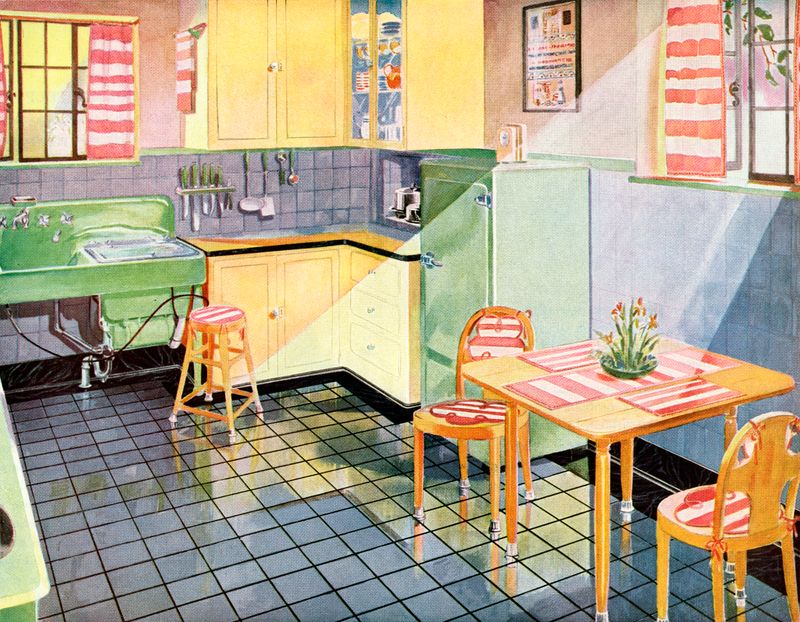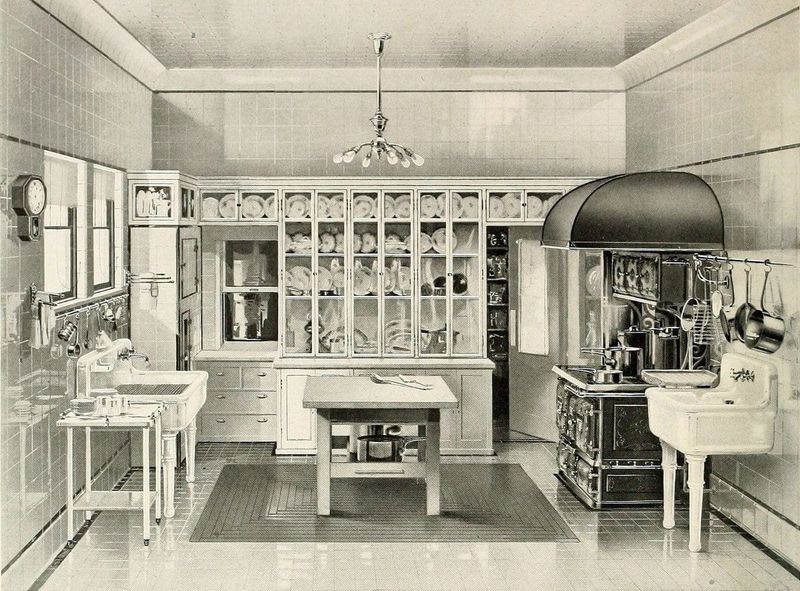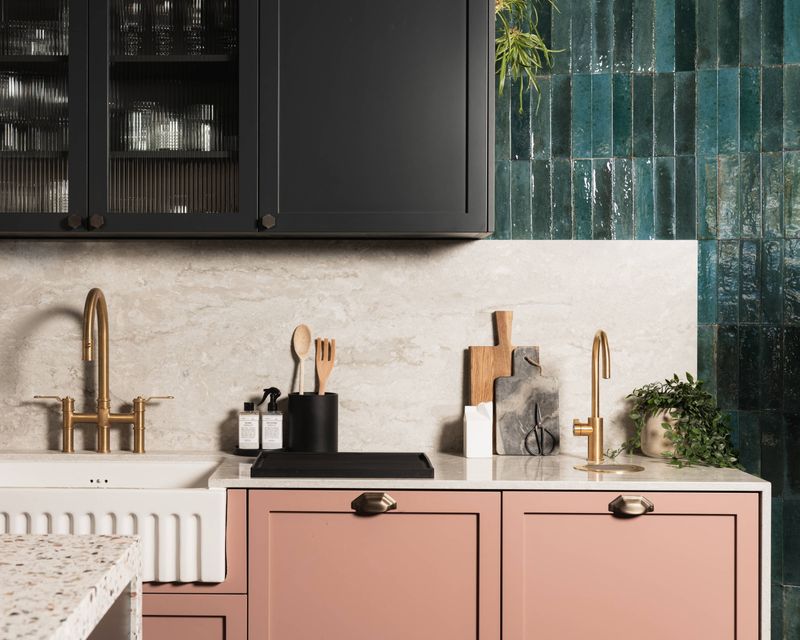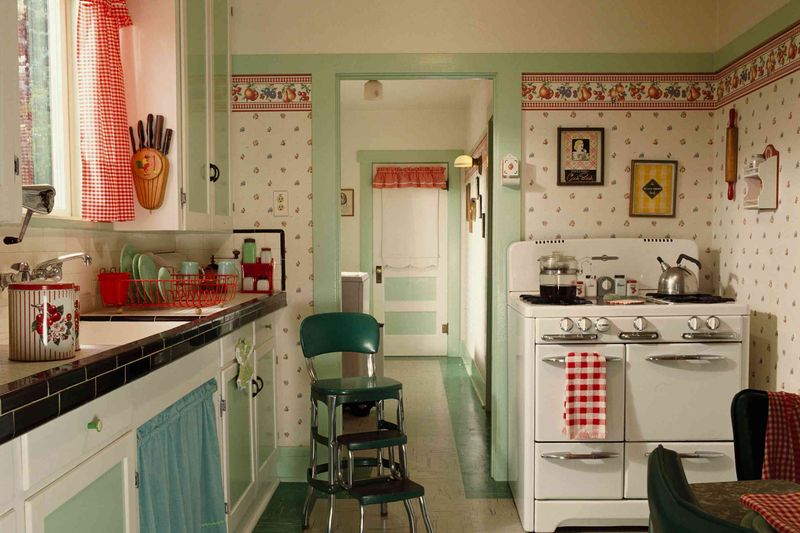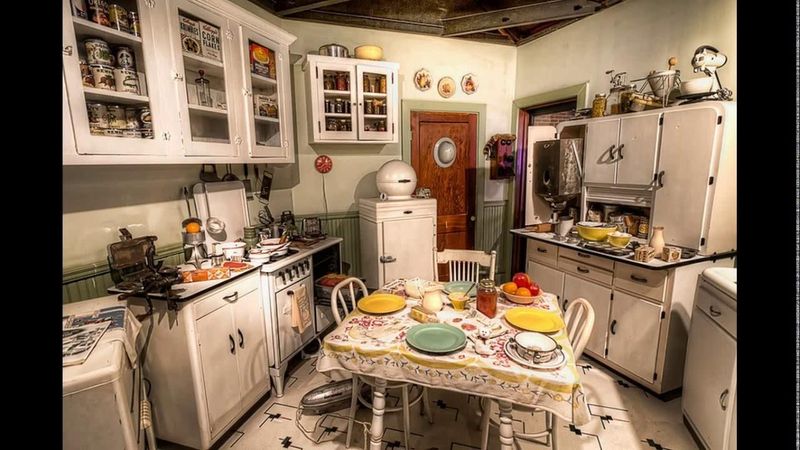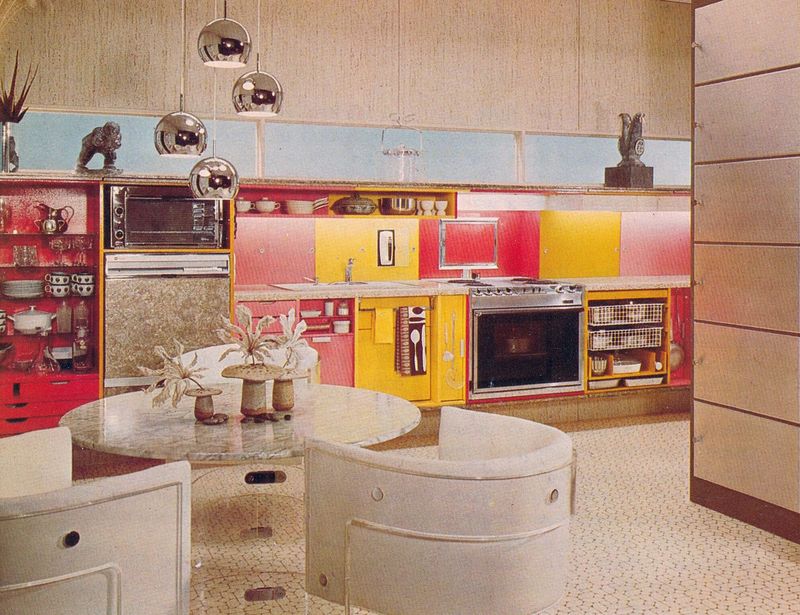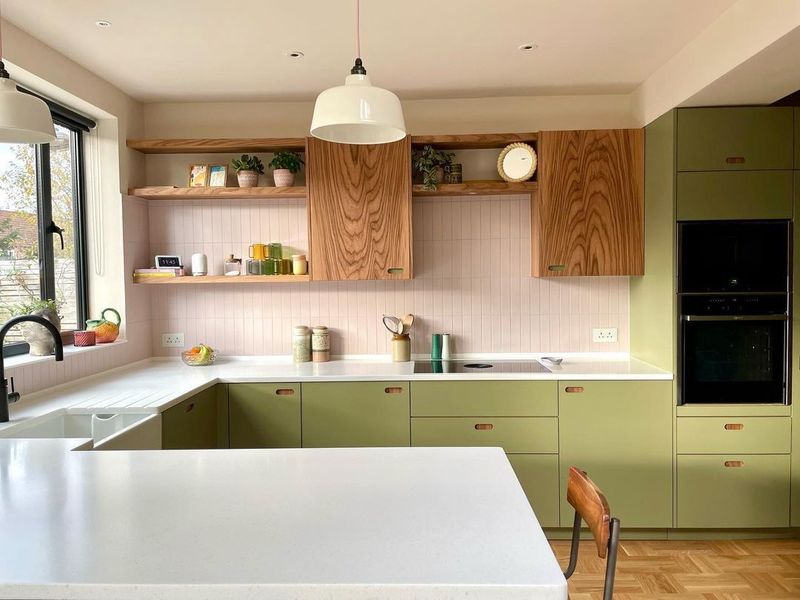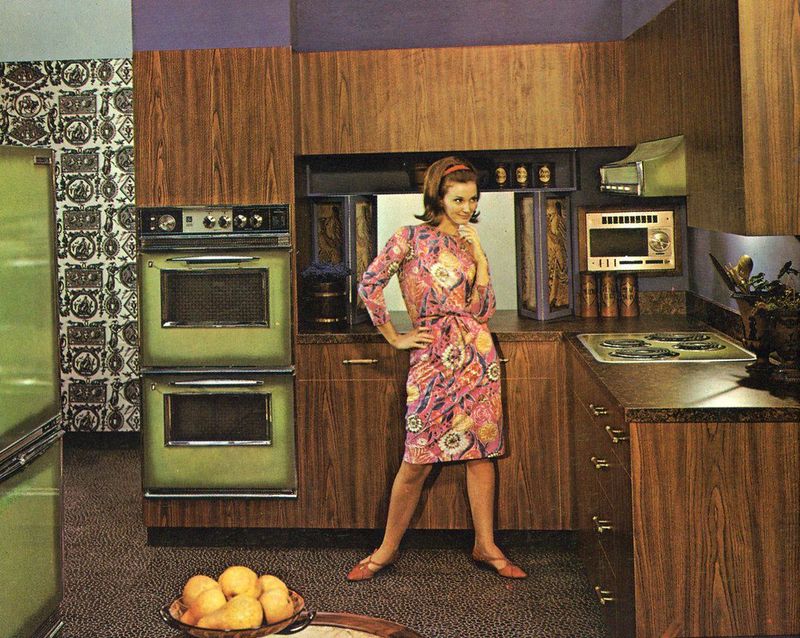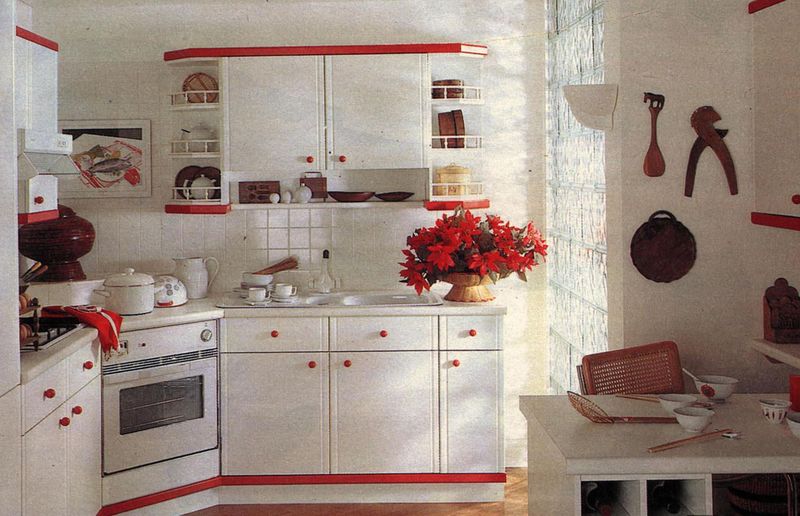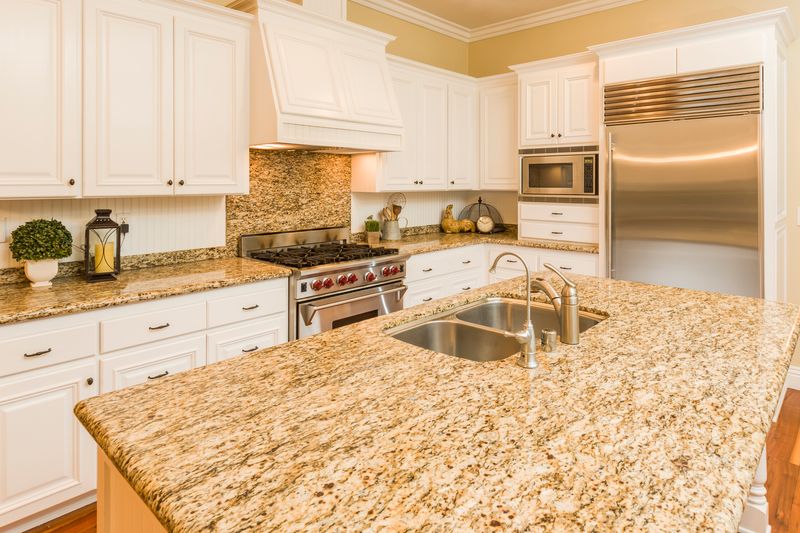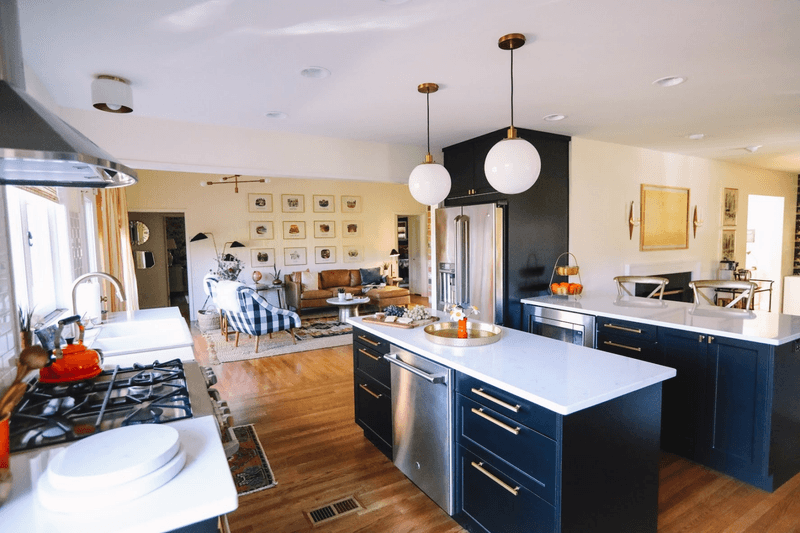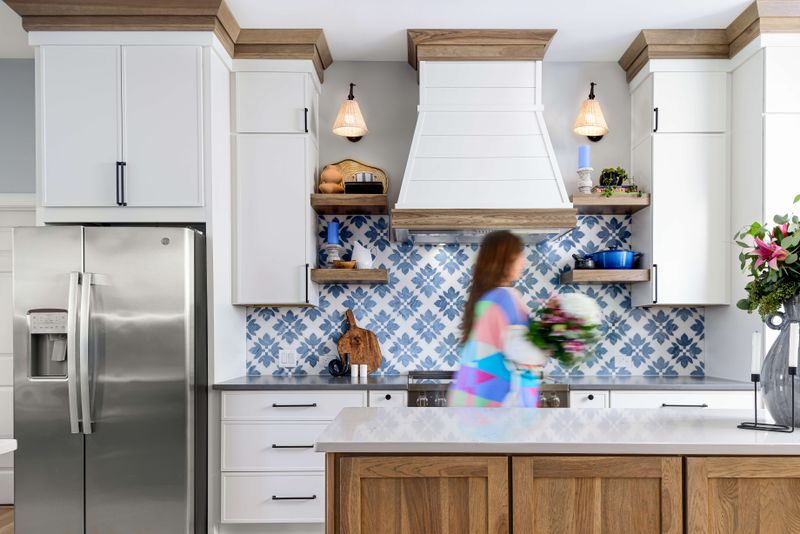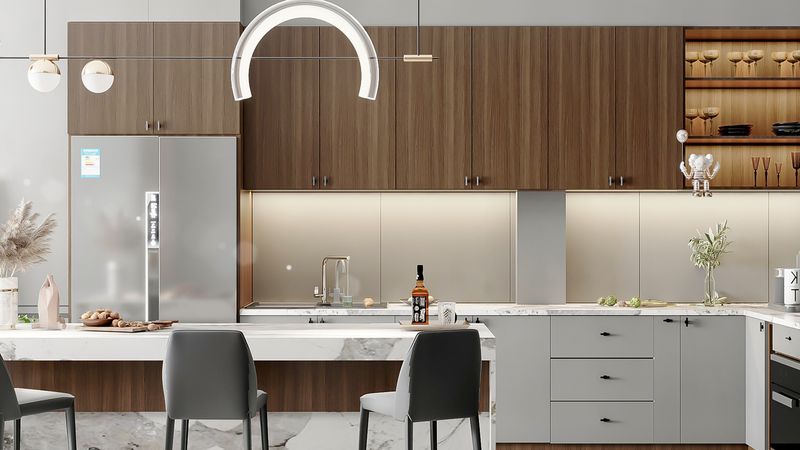American Kitchen Design Trends Over The Years
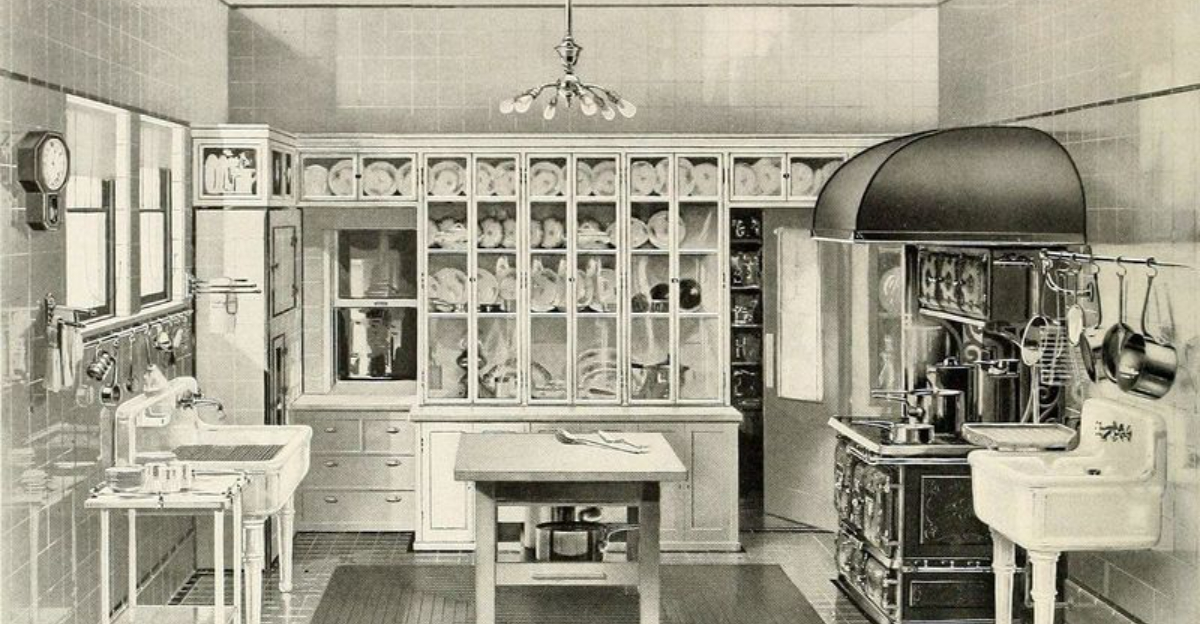
The evolution of American kitchens reflects more than just changing aesthetics—it tells the story of cultural shifts, technological advancements, and evolving lifestyles. From the modest, practical layouts of the early 1900s to the sleek, high-tech spaces of today, each era left its mark on how we cook, gather, and live.
In this nostalgic journey, we explore how kitchen design transformed over the years, from vibrant retro color schemes to the rise of open-concept layouts and smart technology. Let’s take a step back in time and revisit the most iconic trends that shaped American kitchens through the decades.
1. The 1900s: Simple and Functional
At the turn of the century, kitchens were strictly utilitarian, designed for efficiency rather than style. Most featured a cast-iron stove, a wooden table for food prep, and open shelves for easy access to cookware.
Functionality reigned supreme—countertops were often plain wood or zinc, and storage was minimal. Kitchens were not social spaces but purely work areas.
The industrial revolution was just beginning to shape household conveniences, but for most homes, the kitchen remained a simple, hardworking room.
2. The 1910s: Homemaker’s Haven
By the 1910s, kitchens began evolving into more organized spaces tailored to the needs of homemakers. The Hoosier cabinet became a household staple—an all-in-one unit with built-in flour sifters, spice racks, and ample storage.
Pastel colors and decorative elements started to appear, adding warmth to the once-plain kitchen. Gas stoves were slowly replacing wood-burning models, making cooking more efficient and freeing up time for other household tasks.
3. The 1920s: Art Deco Elegance
The Roaring Twenties brought a newfound sense of style and sophistication to kitchen design. Art Deco influences were everywhere—bold geometric patterns, chrome fixtures, and sleek black-and-white color schemes.
Kitchen appliances, such as refrigerators, were becoming more common, and colorful tile backsplashes added a decorative touch. For the first time, design and function merged, making the kitchen a more inviting space rather than just a place for chores.
4. The 1930s: Streamlined Style
With the Great Depression affecting household budgets, kitchen designs in the 1930s leaned toward simplicity and affordability. Built-in cabinets became popular, maximizing storage space while maintaining a clutter-free look.
Soft pastel shades like pale yellow, mint green, and baby blue brought a sense of warmth and comfort. Metal countertops and enameled surfaces replaced wood, making kitchens more sanitary and easier to clean.
5. The 1940s: Wartime Frugality
During World War II, kitchen designs reflected the era’s emphasis on conservation and practicality. Compact, efficient layouts were favored, and patriotic colors like red, white, and blue subtly appeared in décor.
With rationing in place, kitchen designs focused on maximizing resources, incorporating smart storage solutions and multi-purpose furniture. Though simple, these kitchens symbolized resilience and adaptability during challenging times.
6. The 1950s: Retro Revolution
With post-war optimism at an all-time high, 1950s kitchens exploded with color, charm, and futuristic appliances. Pastel pinks, turquoise, and sunshine yellow were everywhere, often paired with shiny chrome accents and checkered floors.
Appliance companies promoted the latest refrigerators, dishwashers, and electric ovens, making cooking easier and more stylish than ever. Diners and soda shops influenced the look, with Formica countertops and vinyl stools completing the retro aesthetic.
7. The 1960s: Mod and Minimalist
The 1960s embraced bold colors, open layouts, and minimalist designs. Mustard yellow, avocado green, and burnt orange became the dominant hues, while plastic and fiberglass materials replaced wood in many areas.
Kitchens started feeling less like separate rooms and more like extensions of the living space, with open-concept designs making their way into homes. This decade marked the beginning of the kitchen as a social hub, not just a place for cooking.
8. The 1970s: Earthy and Eclectic
The 1970s kitchen reflected a shift toward nature-inspired designs, with earthy tones like burnt orange, avocado green, and deep brown dominating the space. Wood paneling, exposed beams, and brick backsplashes gave kitchens a cozy, rustic feel.
The influence of the environmental movement could be seen in the rise of natural materials and houseplants as décor. Kitchens were no longer just about function—they became relaxed, welcoming spaces where families gathered and entertained.
Bold geometric patterns and quirky details, such as macramé curtains and hanging pot racks, further defined the era’s eclectic aesthetic.
9. The 1980s: Bold and Brash
Kitchens in the 1980s were all about glamour and technology. Bold colors like black, red, and neon accents made their way into designs, while glossy surfaces and lacquered cabinetry gave kitchens a sleek, high-end look.
Appliances became larger and more high-tech, with built-in microwaves and side-by-side refrigerators becoming status symbols. Open shelving and glass-front cabinets displayed everything from dishes to decorative glassware.
The decade also saw the rise of kitchen islands, providing additional prep space and reinforcing the trend of kitchens as entertaining hubs rather than just food-prep areas.
10. The 1990s: Sleek and Sophisticated
The 1990s kitchen embraced a more refined and understated look, shifting away from the bold excesses of the previous decade. Neutral tones like beige, white, and soft grays became the preferred color palette, often paired with granite countertops and stainless steel appliances.
Minimalist cabinetry, recessed lighting, and large kitchen islands made the space feel sleek and sophisticated. Functionality was key, with built-in appliances and pantry storage becoming essential features.
The rise of open-concept homes led to kitchens blending seamlessly into living spaces, encouraging family togetherness and socializing while cooking.
11. The 2000s: Open and Airy
In the early 2000s, kitchen designs favored open layouts, natural light, and a mix of classic and modern elements. Large islands with bar seating became a focal point, perfect for casual dining and entertaining.
Cabinetry leaned toward rich wood tones like cherry and maple, while granite countertops remained a staple of upscale kitchens. Stainless steel appliances continued their reign, contributing to a clean and polished aesthetic.
With the rise of the “gourmet kitchen” trend, professional-grade appliances, double ovens, and oversized refrigerators became must-have features, catering to homeowners who loved to cook.
12. The 2010s: Modern Farmhouse
The 2010s saw the explosion of the modern farmhouse trend, blending rustic elements with contemporary conveniences. White shaker cabinets, subway tile backsplashes, and farmhouse sinks became defining features of this style.
Reclaimed wood, exposed beams, and industrial-style lighting added warmth and texture, creating an inviting, lived-in atmosphere. The neutral color palette—dominated by white, gray, and soft blues—made kitchens feel bright and airy.
Open shelving replaced traditional upper cabinets in many homes, emphasizing simplicity, functionality, and charm. Kitchens became less about grandeur and more about comfort and practicality.
13. The 2020s: Sustainable and Smart
Modern kitchens in the 2020s prioritize sustainability, smart technology, and streamlined design. Recycled materials, energy-efficient appliances, and eco-friendly countertops reflect the growing emphasis on green living.
Minimalism is key—clean lines, neutral tones, and uncluttered surfaces create a calming, harmonious environment. Matte finishes and integrated appliances help achieve a seamless look.
Smart technology plays a crucial role, with touchless faucets, voice-activated lighting, and AI-assisted ovens making cooking more efficient. The kitchen has truly evolved into a multi-functional, high-tech hub that blends style with cutting-edge innovation.

